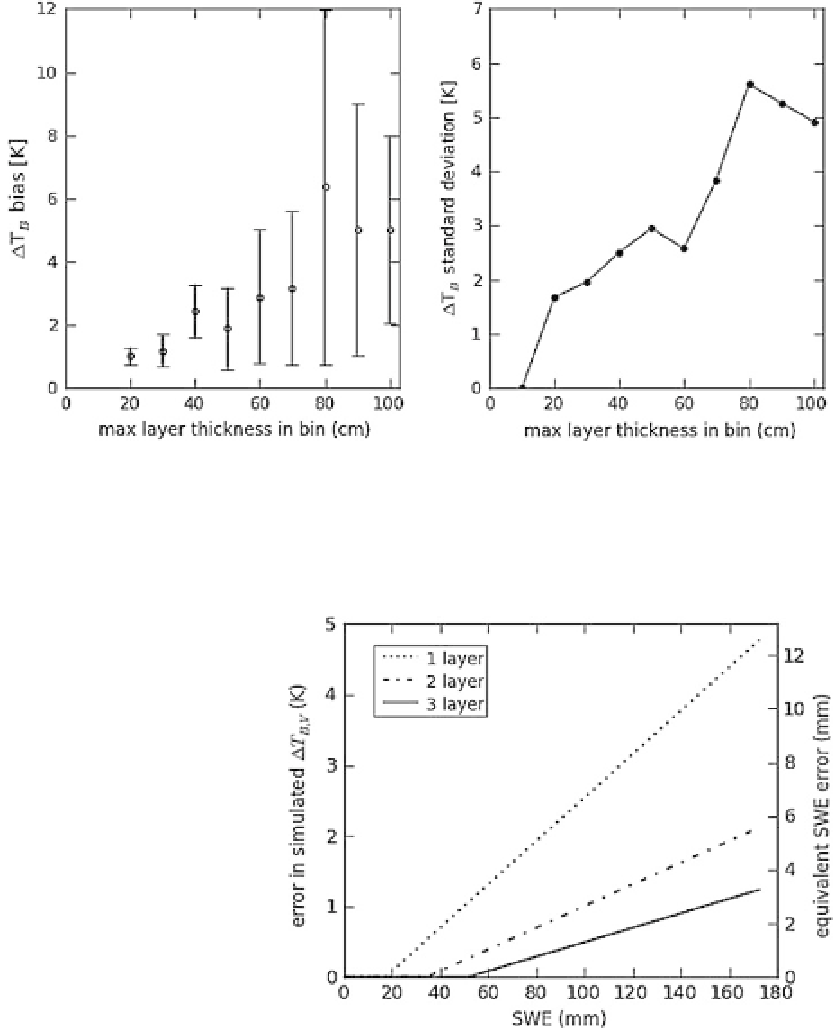Geoscience Reference
In-Depth Information
Fig. 9 Bias in simulated brightness temperature difference for snow profiles of thicker layers, relative to an
N-layer model with 10 cm layer thicknesses, where error bars are 2-sigma (left). The standard deviation of
brightness temperature difference relative to an N-layer model is quantified as a function of layer size
(right), with an approximately linear increase in simulated DT
B
;
V
error as snow stratigraphy is simplified
into thicker layers
Fig. 10 Absolute error in snow
water equivalent (SWE)
introduced via simplification of
the Cold Land Processes
Experiment (CLPX) pit
stratigraphy from N-layers to
fewer layers, as a function of
total SWE. Lines represent output
using a one- (dotted line), two-
(dashed line) or three-layer (solid
line) snow profile as labelled in
legend (top left)
6 Discussion and Conclusions
Snow is extremely important in terms of meteorology, climatology and hydrology. Its
surface properties can affect atmospheric chemistry and the energy balance, and an
abundance of remote sensing products with well-characterised errors assess a wide variety
of these surface properties, from grain size to contaminants to surface melt.
Snow water equivalent is of great interest, and estimates of SWE are most easily defined
as a remote sensing, model, reanalysis or station-based product. Each of these approaches
provides its own advantages, but each also has drawbacks: reanalyses and station-based
products suffer from sparse observations, models have uncertainties due to limitations in


